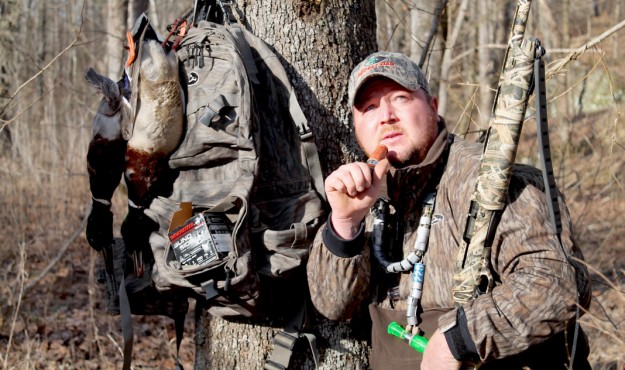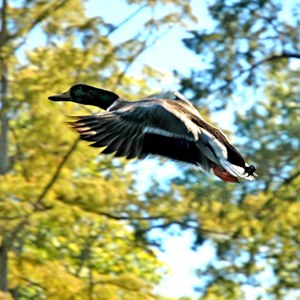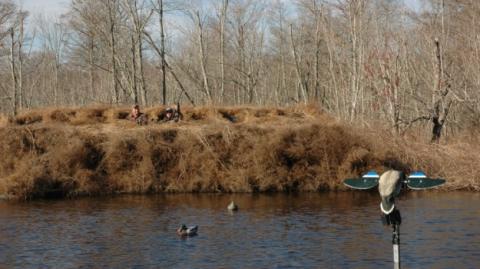
Whether you hunt waterfowl from a pit or a layout blind in a cornfield, you always need a handy supply of good strong cornstalks to camouflage your layout blind or pit. However, I believe more hunters who don’t have access to agricultural fields to hunt either hunt from stationary blinds next to trees, boat blinds or stands they wade to in flooded timber. In many areas, oak limbs are far more necessary for keeping your blind invisible than corn stalks are. We’ve learned that by cutting oak limbs while the leaves are still green, as those leaves begin to dry and turn brown in a protected barn, they’ll tend to hold onto the limbs much longer than if they’re out in the weather and exposed to wind, water, ice and snow. The leaves provide as much, if not more, blind material than the  limbs do. So, we want our leaves to be holding onto the limbs we cut for as long as possible. We always like to re-brush our lines with oak limbs that have leaves on them that will stay on the branches longer. Also, by cutting and storing the oak limbs that we want to use for blind material, we have a ready supply of brush that we can pick up on the way to the blind and use to re-brush our blind just before shooting time. We’ll stack plenty of oak limbs in one of the bins of the pole barn where we keep our corn stalks bundled and piled. We’ll also use a hay rake or a pitch fork to rake up the short stalks that have been cut when the farmer cuts his fields and the root systems that hold those stalks. Then we’ll put those piles of stubble on top of our pit blind or pile them around the edge of the layout blind. Next we’ll use the stalks of corn that we’ve cut and lay them on top of the shooting ports of our pit blind and on the tops of and edges of the layout blinds.
limbs do. So, we want our leaves to be holding onto the limbs we cut for as long as possible. We always like to re-brush our lines with oak limbs that have leaves on them that will stay on the branches longer. Also, by cutting and storing the oak limbs that we want to use for blind material, we have a ready supply of brush that we can pick up on the way to the blind and use to re-brush our blind just before shooting time. We’ll stack plenty of oak limbs in one of the bins of the pole barn where we keep our corn stalks bundled and piled. We’ll also use a hay rake or a pitch fork to rake up the short stalks that have been cut when the farmer cuts his fields and the root systems that hold those stalks. Then we’ll put those piles of stubble on top of our pit blind or pile them around the edge of the layout blind. Next we’ll use the stalks of corn that we’ve cut and lay them on top of the shooting ports of our pit blind and on the tops of and edges of the layout blinds.
One of the jobs no one likes to do when duck season arrives is to cut limbs and stalks to have blind material to re-brush your blinds. We gather all of the oak limbs and corn stalks that we plan to use during waterfowl season 3-4 weeks before waterfowl season arrives. Using this system, we don’t have to spend any time looking for or cutting brush material to re-brush the blinds later. We also have our oak brush divided into two different sizes. The oak limbs we use on our boat blind we don’t want to be any thicker than our thumbs. For the permanent blinds out in the water and the blinds we have in the flooded timber, the size of the limbs we cut doesn’t matter. Those limbs can be somewhat bigger. However, when you put two hunters, a dog and a bunch of decoys in a boat, you want to keep that blind as light as possible. That’s the reason we cut smaller limbs to brush-up our boat blinds. Then we cut larger limbs we use to brush our flooded timber blinds and/or our permanent boat blinds.
Day 1: Gathering Oak Limb and Corn Crops for Waterfowl
Tomorrow: Finding Public Land Ducks with Mossy Oak Pro Richie McKnight






























